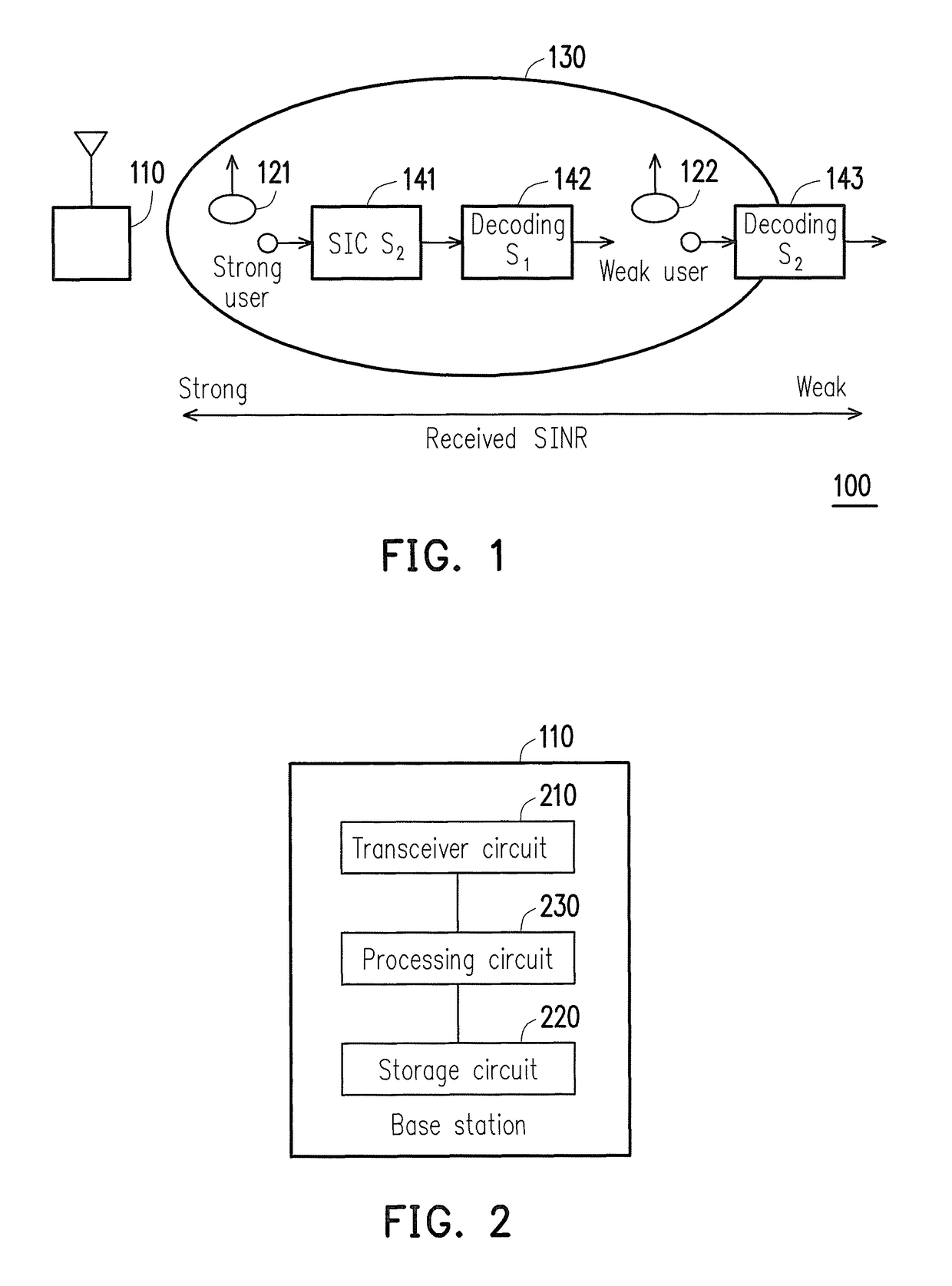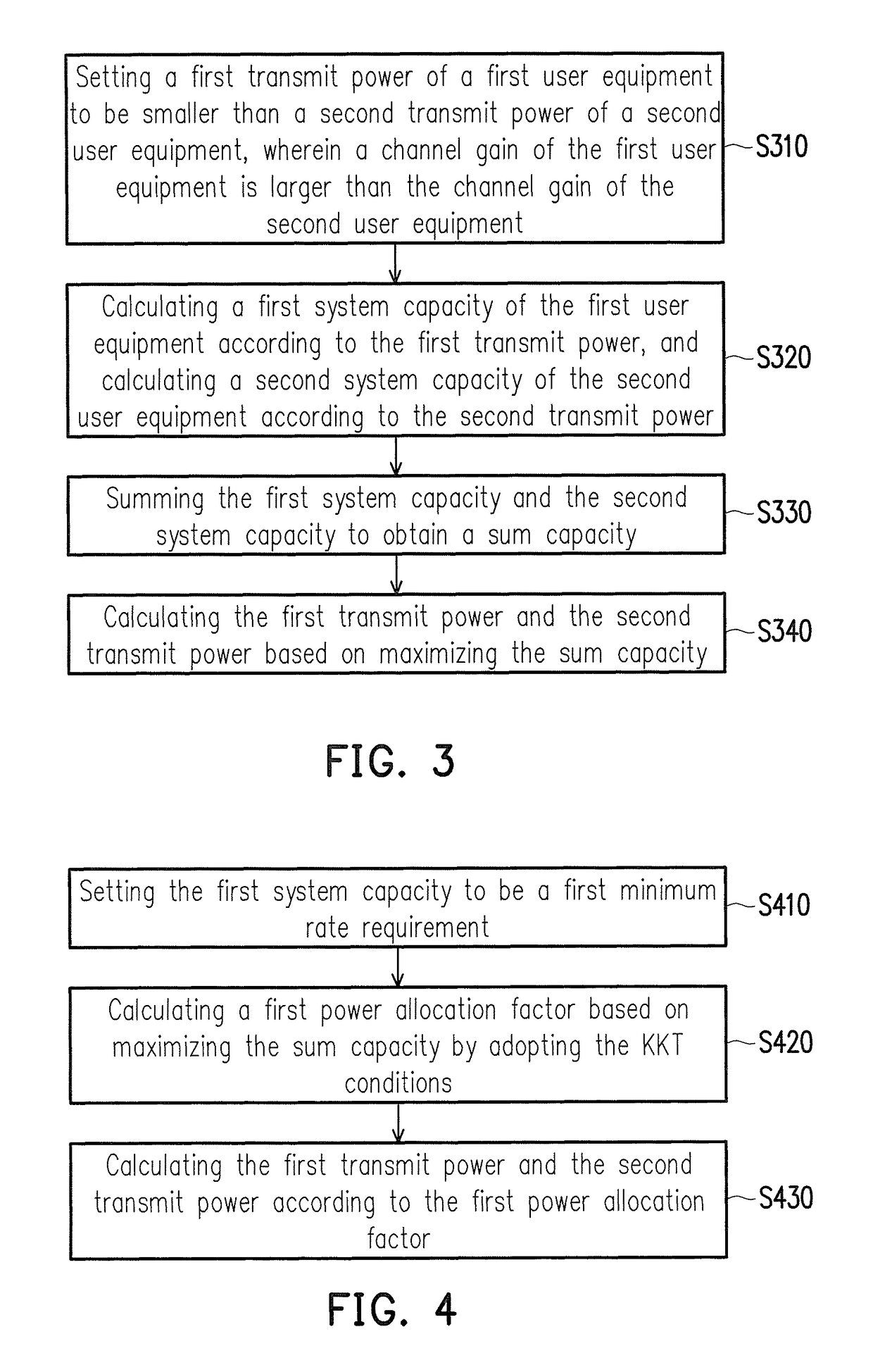Method of power allocation and base station using the same
a power allocation and base station technology, applied in power management, electrical equipment, wireless communication, etc., can solve the problem of lack of ideal evaluation criteria for developing a suitable power allocation algorithm, and achieve the effect of maximizing the system capacity of other user equipmen
- Summary
- Abstract
- Description
- Claims
- Application Information
AI Technical Summary
Benefits of technology
Problems solved by technology
Method used
Image
Examples
Embodiment Construction
[0033]Reference will now be made in detail to the present preferred embodiments of the disclosure, examples of which are illustrated in the accompanying drawings. Wherever possible, the same reference numbers are used in the drawings and the description to refer to the same or like parts.
[0034]In the NOMA system, a base station can share the same communication resource (e.g., the time domain or the frequency domain) to each of users on the power domain, so as to effectively improve a spectrum efficiency. Specifically, the base station superposes signals to be transmitted to multiple users by using the superposition coding and transmits a resulting signal. The users may separate the user signal at the receiver by using the SIC technique. Description regarding the SIC technique used in the NOMA system is provided below with reference to FIG. 1.
[0035]FIG. 1 illustrates a schematic diagram of the SIC technique used by the users at the receiver. Referring to FIG. 1, it is assumed that a ...
PUM
 Login to View More
Login to View More Abstract
Description
Claims
Application Information
 Login to View More
Login to View More - R&D
- Intellectual Property
- Life Sciences
- Materials
- Tech Scout
- Unparalleled Data Quality
- Higher Quality Content
- 60% Fewer Hallucinations
Browse by: Latest US Patents, China's latest patents, Technical Efficacy Thesaurus, Application Domain, Technology Topic, Popular Technical Reports.
© 2025 PatSnap. All rights reserved.Legal|Privacy policy|Modern Slavery Act Transparency Statement|Sitemap|About US| Contact US: help@patsnap.com



